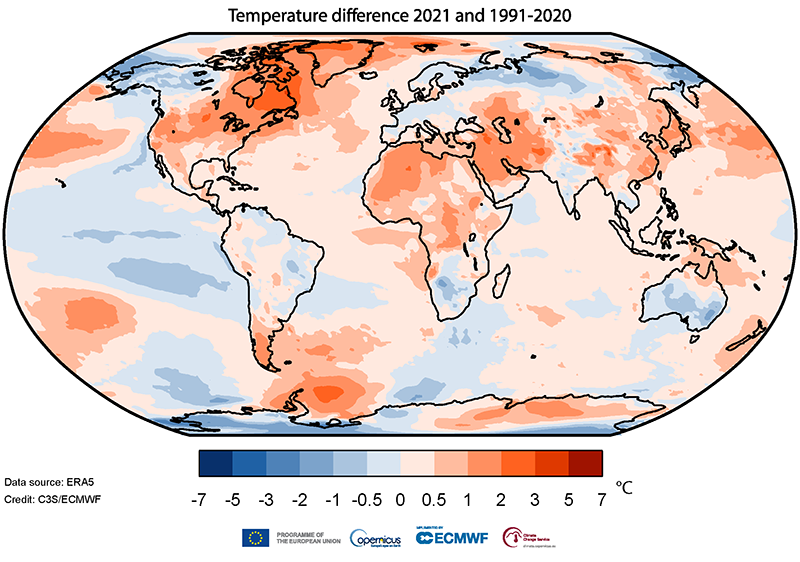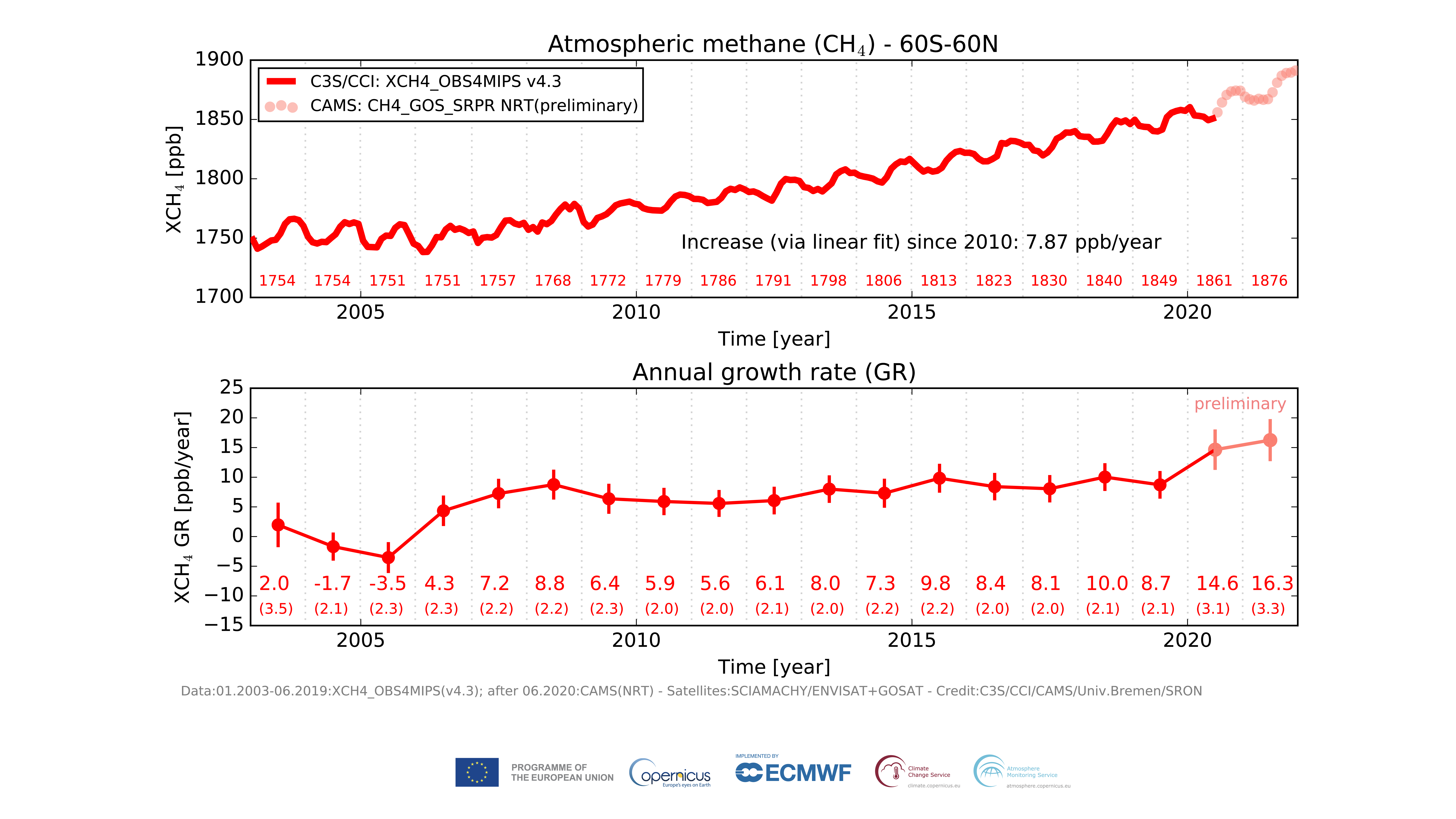European summary of the current climate

The EU’s Copernicus satellite-based environmental monitoring program gives their summary of the current climate state and change.
Copernicus: Globally, the seven hottest years on record were the last seven; carbon dioxide and methane concentrations continue to rise
Press Release 10/01/2022, Copernicus Reading (UK)
Monthly global CH4 concentrations from satellites (top panel) and derived annual mean growth rates (bottom panel) for 2003–2021. Top: The listed numerical values in red indicate annual XCH4 averages in the latitude range 60oS – 60oN. Bottom: Annual mean XCH4 growth rates derived from data shown in the top panel. The listed numerical values correspond to the growth rate in ppb/year including an uncertainty estimate in brackets. Data source: C3S/Obs4MIPs (v4.3) consolidated (2003– mid 2020) and CAMS preliminary near real-time data (mid 2020-2021) records. Credit: University of Bremen for Copernicus Climate Change Service and SRON Netherlands Institute for Space Research in Leiden for the Copernicus Atmosphere Monitoring Service/ECMWF.

ACCESS TO DATASET 1, ACCESS TO DATASET 2 | DOWNLOAD ORIGINAL IMAGE
Read the complete release….
What does this mean and what can we do about it.
The process of global warming that underlies the present climate emergency is continuing to make the crisis worse. There is no evidence yet that humans (or Australians) are doing anything to even slow the process that is leading us ever closer to a point of no return, where nothing humans can do will suffice to stop Earth’s Climate System from flipping to the Hothouse Earth state that will result in a global mass extinction event. (My graphical essay explains the science underlying this claim.)
Australia’s greenhouse gas emissions are contributing significantly to this problem. Not only are Captain Humbug and his troop of willing puppets forming our COALition government doing little to reduce greenhouse gas emissions, but they continue to subsidize, promote, and protect their patrons in the fossil fuel industry over working to assure the futures of the citizens who elected them. If we value our own futures and the futures of our children and grandchildren, it is time to replace these coal-handed clowns with people who will give first priority to action on climate change. This year’s Federal Election gives us the chance to do exactly this.
The reality is that if fail to stop and reverse global warming, our families will have no future — meaning that no other issues matter because there will be no one left to be concerned by them.
The Vote Climate One team has assembled a downloadable Traffic Light Voting Guide to help you use your vote to ensure that your preferences will not flow to any of the COALition puppets. We don’t tell you how to vote, but give you a tool to help you decide who you can safely vote for, whose preferences won’t flow to the COAL puppets and clowns should they fail to be elected.